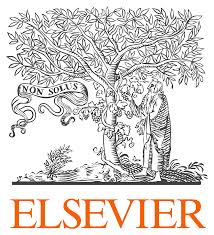Location
What is ScienceDirect
Elsevier’s leading platform of peer-reviewed scholarly literature.
University libraries and institutions offer ScienceDirect access to their communities of researchers.
Researchers, teachers, students, healthcare and information professionals use ScienceDirect to improve the way they search, discover, read, understand and share scholarly research.
Members:
Resources
Displaying 196 - 200 of 284Unpacking Indonesia’s independent oil palm smallholders: An actor-disaggregated approach to identifying environmental and social performance challenges
Processes of globalization have generated new opportunities for smallholders to participate in profitable global agro-commodity markets. This participation however is increasingly being shaped by differentiated capabilities to comply with emerging public and private quality and safety standards. The dynamics within Indonesia’s oil palm sector illustrate well the types of competitive challenges smallholders face in their integration into global agro-commodity chains.
Unpacking systemic innovation capacity as strategic ambidexterity: How projects dynamically configure capabilities for agricultural innovation
Problems in agriculture and land use are increasingly recognised as complex, uncertain, operating at multiple levels (field to global value chains) and involving social, economic, institutional, and technological change. This has implications for how projects navigate complexity to achieve impact. However, few studies have systematically evaluated how project actors engage with other actors to configure capabilities and resources across multiple levels in agricultural innovation systems (AIS), from the individual to the network, to mobilise and build systemic innovation capacity.
Food, farmers, and the future: Investigating prospects of increased food production within a national context
With international food price shocks in 2008 and 2011, food security became a political priority in many countries. In addition, some politicians have recently adopted a more nationalistic stance. Against that background, this paper critically investigates the prospects of increased food production within a national context. We use a small, high-income country, Norway, as an empirical case. In 2012, the government set a goal of increasing agricultural food production by 20% by 2030. We ask: 1) How has food production in Norway developed before and after the goal was set?
A misfit in policy to protect Russia’s black soil region. An institutional analytical lens applied to the ban on burning of crop residues
Russia’s region of Chernozem and Kastanozem soils in Western-Siberia, where this study focused on the Kulunda steppe, has great potential as a carbon sink, particularly if the current widespread practice of burning crop residue can be replaced with conservation tillage practices that will return the residue to the soil. Environmentally-oriented land use policy measures have been introduced that could accomplish that goal. But these measures are quite recent, and face obstacles in the prevailing post-socialist institutional environment and in cultural norms.
Transformations of the Romanian agricultural paradigm under domestic economic policy reforms: An analysis during 1960–2011
The main aim of this paper is to investigate the transformations of the Romanian agricultural paradigm under the domestic economic policy reforms. An econometric approach is adopted by analyzing the evolution of Romanian agriculture between 1960 and 2011 from the perspective of its implications on residential land economy. This methodological choice relies on its high degree of applicability and its ability to reveal the massive transformation of the Romanian agricultural paradigm during the period under focus.


